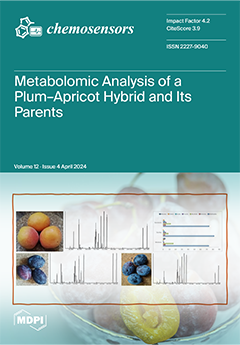In this paper, we report on the solvothermal preparation and detailed characterization of pristine and intentionally doped zirconium dioxide (ZrO
2) nanocrystals (NCs, ~5 nm) with Eu
3+ or Ti
4+/Eu
3+ ions using alkoxide precursors. The results indicated that the
[...] Read more.
In this paper, we report on the solvothermal preparation and detailed characterization of pristine and intentionally doped zirconium dioxide (ZrO
2) nanocrystals (NCs, ~5 nm) with Eu
3+ or Ti
4+/Eu
3+ ions using alkoxide precursors. The results indicated that the ZrO
2 NCs were dominantly of a tetragonal phase (t-ZrO
2) with a small proportion of monoclinic ZrO
2 (m-ZrO
2). The high purity of t-ZrO
2 NCs could be synthesized with more Eu
3+ doping. It was found that the as-obtained ZrO
2 NCs contain some naturally present Ti
4+ ions originating from precursors, but were being overlooked commonly, and some carbon impurities produced during synthesis. These species showed distinct photoluminescence (PL) properties. At least two types of Eu
3+, located at low- and high-symmetry sites (probably sevenfold and eightfold oxygen coordination), respectively, were demonstrated to build into the lattice structure of t-ZrO
2 NCs together. The cationic dopants were illustrated to be distributed non-randomly over the sites normally occupied by Zr, while Ti impurities preferentially occupied the sites near the low-symmetry site of Eu
3+, yielding efficient energy transfer from the titanate groups to the neighboring Eu
3+. Luminescence nanothermometry could measure temperature in a non-contact and remote way and could find great potentials in micro/nano-electronics, integrated photonics, and biomedicine. On the basis of the dual-emitting combination strategy involving the white broadband CT (Ti
3+→O
−) emissions of the titanate groups and red sharp Eu
3+ emissions, t-ZrO
2:Eu
3+ nanophosphors were demonstrated to be ratiometric self-referencing optical thermometric materials, with a working range of 130–230 K and a maxima of relative sensitivity of ~1.9% K
−1 at 230 K.
Full article





